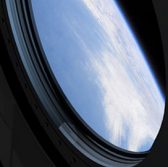 NASA has chosen five space technologies to test fly on high-altitude balloons, suborbital rockets or aircraft that simulate low gravity.
NASA has chosen five space technologies to test fly on high-altitude balloons, suborbital rockets or aircraft that simulate low gravity.
The agency said Saturday the selected experiments are part of the Flight Opportunities program that aims to test space technologies through methods that simulate spaceflight.
Stephan Ord, technology manager for NASA’s Flight Opportunities program, said the program works to help NASA mature technologies that could support future space missions.
NASA called for research proposals in two topics and selected four experiments under the first area that requested the demonstration of space technology payloads.
The four experiments are Rensselaer Polytechnic Institute’s Protein-Drop Pinning in Microgravity; The Aerospace Corp.‘s Rapid Calibration of Space Solar Cells in Suborbital Environments; Airborne Systems‘ Guided Parafoil High Altitude Research II; and the University of Central Florida’s Strata-S1 experiment.
NASA also chose a HNU Phototonics-led research team to demonstrate the potential use of an automated platform to visualize the reaction of live cells to different rocket launch phases under the second topic.
The agency will issue funding awards to cover payload integration, flight and limited payload development costs.




